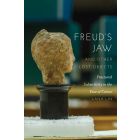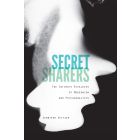Toy Stories
Analyzing the Child in Nineteenth-Century Literature

This book can be opened with

Toy Stories: Analyzing the Child in Nineteenth-Century Literature explores the stakes of recurrent depictions of children’s violent, damaging, and tenuously restorative play with objects within a long nineteenth century of fictional and educational writing. As Vanessa Smith shows us, these scenes of aggression and anxiety cannot be squared with the standard picture of domestic childhood across that period. Instead, they seem to attest to the kinds of enactments of infant distress we would normally associate with post-psychoanalytic modernity, creating a ripple effect in the literary texts that nest them: regressing developmental narratives, giving new value to wooden characters, exposing Realism’s solid objects to odd fracture, and troubling distinctions between artificial and authentic interiority. Toy Stories is the first study to take these scenes of anger and overwhelm seriously, challenging received ideas about both the nineteenth century and its literary forms.
Radically re-conceiving nineteenth-century childhood and its literary depiction as anticipating the scenes, theories, and methodologies of early child analysis, Toy Stories proposes a shared literary and psychoanalytic discernment about child’s play that in turn provides a deep context for understanding both the “development” of the novel and the keen British uptake of Melanie Klein’s and Anna Freud’s interventions in child therapy. In doing so, the book provides a necessary reframing of the work of Klein and Freud and their fractious disagreement about the interior life of the child and its object-mediated manifestations.
Vanessa Smith’s Toy Stories brilliantly dismantles the myth of childhood innocence, perhaps even dearer to the early twenty-first century than to the Victorians. It offers us a theory of the sadistic child as, startlingly, a portrait of both the nineteenth-century novelist and the modern ‘adult.’ This audaciously original book will be essential reading for anyone interested in Victorian fiction and in the stories we continue to tell ourselves about what it means to grow up.—Joseph Litvak, Tufts University
Smith’s recovery of the toy stories that were hiding in plain sight within nineteenth-century novels is a thrill. One finishes this original and humane study with a new understanding of what character, realism, and narrative were for Dickens, the Brontës, and Eliot, as well as a new understanding of the novel form’s relationship to the project of maturation. The object lessons of the bildungsroman were, as we learn here from a wise and generous tutor, shadowed all along by the object relations that are made manifest in childhood scenes of rough and aggressive play.—Deidre Shauna Lynch, Harvard University
An invigorating stereoscopic investigation of Victorian literature and its psychic realities through Anna Freud's and Melanie Klein's competing, complementary understandings of the child. Smith rejects easy gestures of repair, education, and development to offer a reverse genealogy where violent toy stories emerge as twisted object lessons, perverse figures for character, and theatrical scenes of regression. A serious contribution to scholarship on the child, on Klein, and to recent criticism that stays with bad feeling.—Adam Frank, The University of British Columbia
Toy Stories is a tremendous contribution both to psychoanalytic literary criticism and to thing theory.—T. J. Lustig, The Review of English Studies
This in-depth analysis provides some intriguing insights and a new approach to classic literature. . . Highly recommended.—Choice Reviews
Smith’s deft linking of therapeutic paradigms with current discussions about realism and the novel demonstrates that psychoanalytic criticism continues to offer interpretative opportunities.—Nineteenth-Century Contexts
It is hard to do justice in a short review to the layers of literary and psychoanalytical analysis that Smith provides.—Journal of the History of Childhood and Youth
Smith’s attentive focus on the toy as a form of symbolic practice is an important intervention into the critical field of nineteenth-century literature. . . Smith’s insistence that psychoanalytic theory can be usefully brought into dialogue with literature preceding the development of Freudian psychoanalysis at the fin de siècle is significant.—Psychoanalysis and History
Smith offers refreshing and thought-provoking analyses of oft-examined texts such as Charles Dickens’s The Old Curiosity Shop, Charlotte Bronte’s Villette, and George Eliot’s The Mill on the Floss. Most compelling is Smith’s attention to the many scenes of childish destruction of toys found scattered throughout texts from the nineteenth century, and how these scenes offer ‘a countervailing regressive momentum to developmental plots',’ challenging, for example, the forward movement of genres like the Bildungsroman.—Nineteenth-Century Literature
Vanessa Smith’s Toy Stories offers a fresh perspective on the psychotherapeutic dynamics between children and their toys in the literature of the long nineteenth century. . . By confronting the often- overlooked instances of violent play with objects, Smith complicates the history of nineteenth-century childhood. Her monograph also offers a new lens for material culture analyses of literature.—Studies in the Novel
Preface: A Toy Is Being Beaten | ix
Introduction: Child’s Play | 1
1 Proper Objects | 27
2 Possible Persons | 54
3 Our Plays | 82
4 Bildung Blocks | 110
Conclusion: Toy Stories | 137
Acknowledgments | 147
Notes | 149
Works Cited | 189
Index | 205





